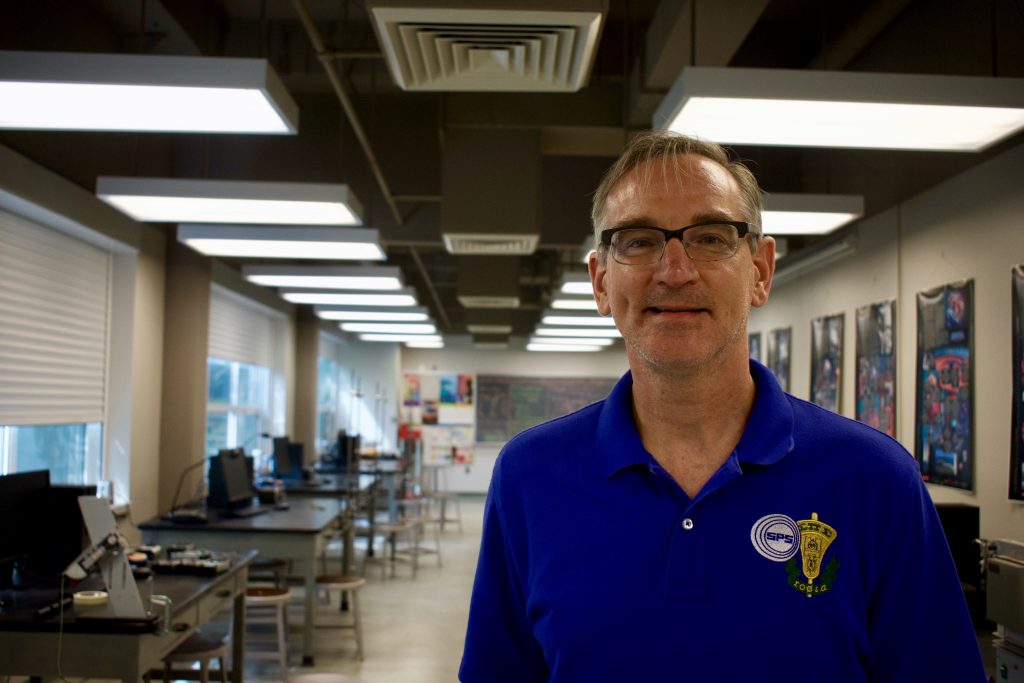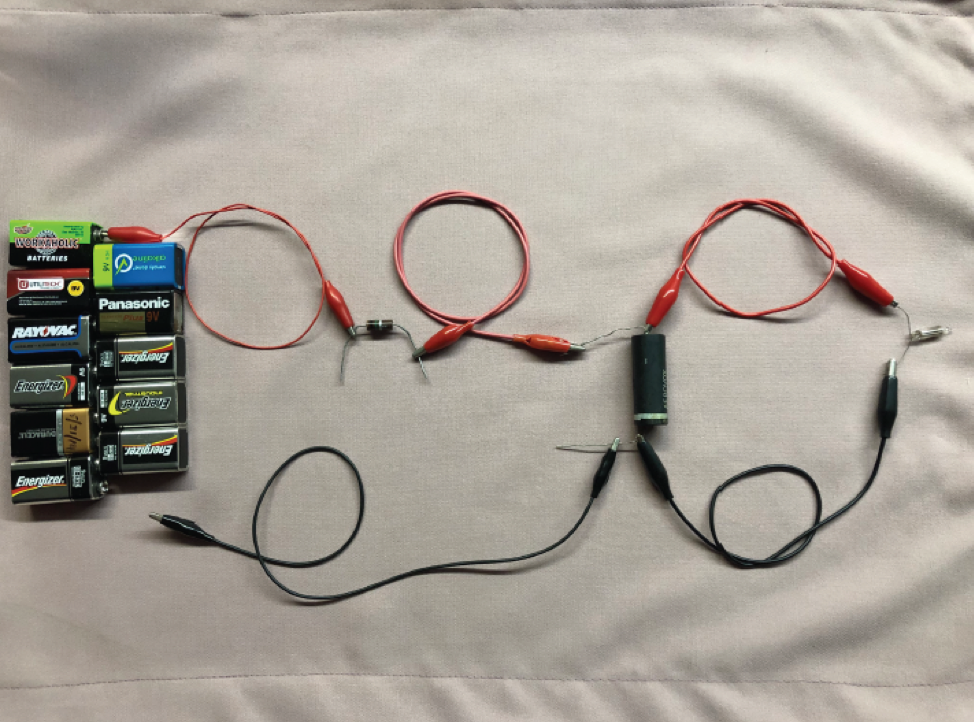
Over the summer, Dr. Blane Baker, professor of physics, and Grant Ryals, sophomore physics major, submitted a paper to the Journal of Physics Education on the topic of RC circuits that was accepted for publication. The pair worked together as part of Jewell’s Pillsbury Scholar Program, which allows students to participate in paid undergraduate research during the summer.
Originally the two started a project about global warming, but unfortunately this did not go as planned. After some further research, Dr. Baker discovered that one of his demos, or a model that is used to demonstrate a particular concept to a group of students, could be useful for other educators across the nation, particularly other college professors or high school teachers who teach AP Physics.
The demo was an RC circuit, which is a fundamental circuit used in various timing applications for electronics. Dr. Baker found that a lot of students failed to understand the principles behind the RC circuit because of the lack of a visual representation.
The paper was meant to provide a way to create an RC circuit with readily available materials so that students could have a visual representation of complicated mathematical principles.
Dr. Baker, who wrote much of the paper, included instructions on how to set up the circuit and suggestions for question that students would answer to test their comprehension. Ryals tested combinations of conductors and resistors that would change the frequency that a small light bulb would flash.
But, what exactly is an RC circuit?

An RC circuit is used as a timing circuit. The batteries, which can be found easily in any classroom, provide a voltage in the circuit. The resistor and capacitor can be switched out for larger or smaller resistance or capacity, which will change the frequency of the neon light flashing at the end of the circuit. Both the resistor and the capacitor are used to create a threshold that the voltage must exceed before the neon light can flash.
An important part of the learning experience is the trial and error involved in switching resistors and capacitors. Dr. Baker believes that this RC circuit model helps students understand, in a more visual way, the mathematical principles behind circuits.
“[The students]… have to use their knowledge and principles to show understanding of what is going to occur in the circuit,” Dr. Baker said.
This hands-on experience allows students to use prior physics studies to predict something that is happening in the real world; thus creating a stronger educational experience.
Ryals said that these RC circuits are an important physics building block, so making sure that students understand exactly what goes on in the circuit is important for their future endeavors.
This model for an RC circuit was submitted to the Journal of Physics Education to show teachers an easy way to set up this type of circuit so as to facilitate classroom learning. Dr. Baker chose to submit the article to this journal because it is constantly on the look-out for innovations in the field of physics education, and this RC circuit model is exactly the kind of thing that would be discussed in the journal.
In order to be accepted as part of the journal, the article had to be submitted for review by the editors of the journal. Dr. Baker submitted various drafts that would then be sent back for necessary edits. Ryals noted that this process can be time-consuming, but because of Dr. Baker’s expertise, the paper actually went by a lot faster than Ryals expected.
Ryals was selected by Dr. Baker to help the article because of the fact that Ryals had already taken a course wherein Dr. Baker had used this very same RC circuit model. Dr. Baker kept Ryals in the loop and would update him when the journal asked for revisions on the article. Ryals worked mostly on testing different configurations of resistors and capacitors to alter the frequency of the light flashing.
According to Dr. Baker, the model isn’t meant to be perfect, but the fact that it visually demonstrates mathematical principles is what is really important. Physics can be extremely difficult for students because it is so theoretical, so classroom experiments such as this RC circuit are invaluable supplemental materials.
When asked about his experience working with Dr. Baker, Ryals mentioned that he had “so much fun” interacting with Dr. Baker, who is extremely experienced in his field.
Ryals believes that this kind of undergraduate research, apart from being a great resume-booster, gives him the necessary tools to be able to succeed as an engineer in the future. Dr Baker’s and Ryals’ cooperation is a paradigm for the kind of innovation that all Jewell students should strive for.
The paper is now a frontline for the Journal of Physics Education under the title “Classroom Activity to Visually Show Variation of RC Time Constant in an Operating Circuit.”
